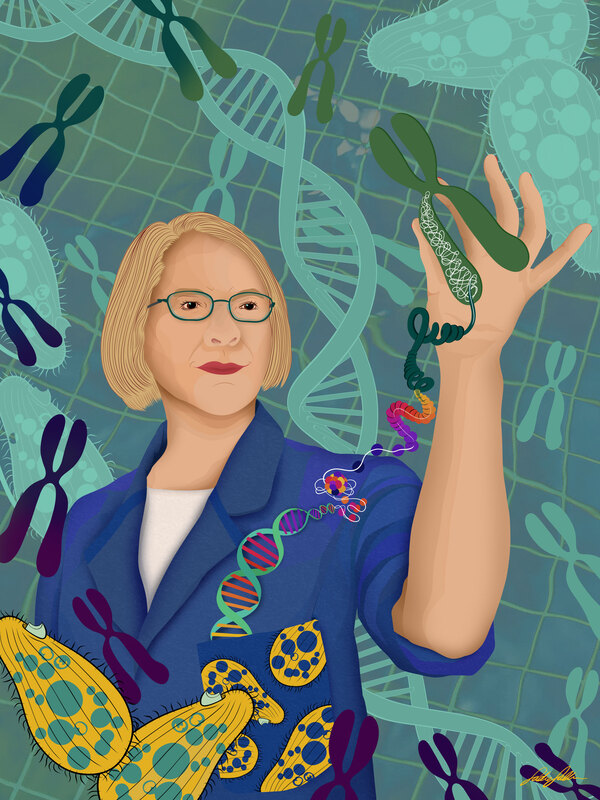|
Elizabeth Blackburn (1948- )
Hobart, Tasmania, Australia Digital Illustration, 24" x 32", 2022 In 1982, Elizabeth Blackburn discovered the molecular structure of telomeres. Telomeres are located at the end of each chromosome. Using Tetrahymena thermophila, a one celled organism, Blackburn found that telomeres were responsible for protecting against chromosomal damage during cell division. They make sure all the important DNA is copied in the correct way.
Continuing her interest in telomer research, Blackburn co-discovered Telomerases with her graduate student Carol Gruider. Telomerase is an enzyme used during cell division that makes each strand of DNA longer before it is copied. This enzyme is necessary during cell division to avoid genetic information from being lost. For this research, Blackburn, Greider, and Jack Szostak were awarded the Nobel Prize in Physiology or Medicine in 2009. Blackburn has gone on to study telomere length in relation to chronic stress and early trauma. Her research with psychologist Elissa Epel showed that stress can shorten one’s telomeres and prematurely age cells. Outside of the lab, she is a huge advocate and mentor for people wishing to enter the scientific field. |
Proudly powered by Weebly
